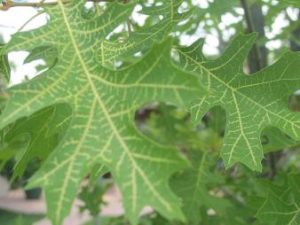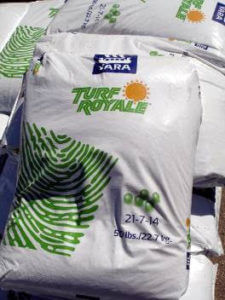Fertilization of Plants
Landscape plants require ample nutrients to thrive. While Southwest desert soils provide some adequate nutrients and minerals, many plants require additional amounts of nitrogen, phosphorus and potassium. Nitrogen produces the rich, green color of foliage and promotes overall plant growth. Phosphorus is needed to stimulate root growth and helps produce fruits and flowers. Potassium improves the plant’s overall vigor and fights diseases. Most basic fertilizers found in local garden centers supply nitrogen, phosphorus, and potassium in necessary quantities.

Micronutrients are also essential for plant growth and are needed in small quantities. These elements include iron, manganese, zinc, copper, boron, molybdenum, cobalt, nickel, and chlorine. Recycled organic matter, such as grass and tree leaves, is an excellent source of micronutrients for growing plants. Using homemade compost or similar products is another great way to add nutrients to plant material.
An alternative is to fertilize plants with organic nutrients. Organic fertilizers are different than chemical fertilizers because they add nutrients to your plants while adding organic material to the soil. When soils have an abundance of organic matter, they hold moisture and nutrients and remain loose and airy. Organic fertilizers are also made specifically from animal or vegetable matter and will take longer to break down. This helps the nutrients last longer and be delivered to the plant at an optimal rate.
One prevalent problem in landscape plants in our Southwest desert is iron deficiency or iron chlorosis. Symptoms are characterized by yellow leaves with green veins, especially on young plant leaves. A soil test will indicate a low level of iron in the soil. Landscape plants that suffer most from chlorosis include citrus, pyracantha, peach trees, photinia, gardenia, ash, xylosma, roses, privet, oak, mulberry, and turf grass.

Applications of granular iron fertilizers (before planting) or liquid iron products (after planting) are helpful in supplying iron to landscape plants. Plants respond to applications of iron fertilizer better during warmer weather.
The analysis of most fertilizers is designated by federal law with the numbers that appear on a fertilizer package. The numbers indicate the available nutrients by percentage contained in that fertilizer. For example, a 12-8-10 fertilizer has 12 percent nitrogen, 8 percent phosphorous, and 10 percent potassium. A bag of 21-0-0 fertilizer contains 21 percent nitrogen, but no phosphorous or potassium.

There are different methods of applying fertilizer to plants. Broadcasting is a technique whereby granular fertilizer is scattered uniformly over the soil surface. This is an excellent way to fertilize a flower or vegetable garden. Another method is to scatter fertilizer at the base of individual plants. A third method is using a fertilizer spreader to apply the chemical, which is especially beneficial when applying fertilizers to a lawn area. Fertilizer can also be applied as a foliar application for treating plants with iron deficiencies or applying other micronutrients. Foliar applied nutrients are absorbed and used by the plants rapidly. Using special injectors, fertilizers can be applied through drip or sprinkler systems.
Most landscape plants benefit from fertilizing in early spring, after the last frost. This usually occurs in our Southwest deserts somewhere in mid March, depending on your location. I always use a cup to scatter granular fertilizer around the base and roots of each plant. Always water the chemical into the soil after each application. If rain is in the forecast, this is good time to broadcast fertilizer around plant roots.
Fertilizing Turf
Both hybrid Bermuda grass and common Bermuda grass lawns have relatively high fertilizer requirements. The amount and frequency depends on the desired appearance and growth rate of the turf. Turf grass formulations are fertilizers that contain mostly nitrogen with lesser amounts of phosphorus and potassium. To maintain high quality turf, fertilize using one to one and a half pounds of nitrogen per 1,000 square feet. Apply every four to six weeks during the growing season.
Lower amounts of nitrogen fertilizer can be applied and still maintain acceptable turf for sports fields and golf courses. That rate should be a half-pound per 1,000 square feet per month. Apply fertilizer with a broadcast spreader set to the manufacturer’s recommended specifications. Irrigate lawns after any fertilizer application.
Soil types also influence fertilizer needs. Sandy soils require lighter but frequent applications of nitrogen fertilizer. Sandy soils are also typically low in other nutrients such as phosphorus and potassium, and these must also be provided by fertilization.
Over-seeded winter ryegrass lawns require applications of a nitrogen fertilizer every three to four weeks during the winter growing season. Applications of a quick release nitrogen fertilizer with ratios of 21-7-14 are beneficial to help green up perennial rye grass lawns. Follow the directions on the fertilizer label for correct application.





